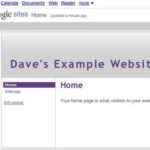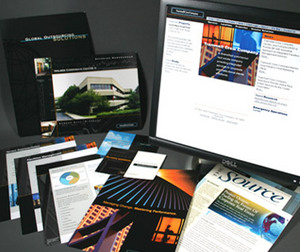Google’s website design communicates the values and image of Google the company. The design is a function of who Google is (the best search engine) and what it stands for (simplicity, speed, fun, and not being evil.)
If you’re not one of the many people who use Google, take a minute to go look at their home page design (www.google.com). You’ll notice that is has a very simple design–there is the logo, search box, about 14 important/popular links scattered around the page, and a link to “more.” You’ll notice a lot of white space, and that the only graphic is the logo (and a simple one at that.)
This design of this page hasn’t changed much since Google’s creators, Larry Page and Sergey Brin, were grad students at Stanford in 1998. You can see the site design from December 1999 (the earliest available) through the Wayback Machine (http://web.archive.org/web/19981202230410/http://www.google.com/).
Originally, the design was simple because Larry and Sergey weren’t designers and couldn’t afford a designer. But it was a big hit with their early users. The clean design implied purity, and it stood out from the animated, music-playing, cluttered websites that were all over the Internet at that time. The Google site didn’t look like it was trying to sell anything (and it wasn’t, at that point). The design quickly earned many fans. (Vise, 39-40)
Here are a few things we can learn from Google’s website success:
1. Focus your home page on what you most want your visitor to do–or what they most want to do.
In Google’s case, this is searching. The search box is right in the middle of the page and is the longest element on there. As Joe at www.bookofjoe.com says in his blog, it makes things “as transparent and easy to understand and use as possible. So simple even a ‘technodolt’ can do it the first time without reading any instructions. There can be no higher accolade for any company engaged in creating something that has to do with computers.”
2. Your website’s design should reflect the personality of your company.
Google’s image includes having fun and keeping things simple. It’s the opposite of many large companies’ corporate and bureaucratic way of doing business and presenting themselves. Their company motto is “Don’t be evil.” Their website’s simple design, bright colors, and surplus of white space communicate simplicity, fun, and purity or goodness.
3. Your website should be easy and efficient to use.
Two other benefits of Google’s site design are that it’s very easy to get to what you want to see (pretty much everything that isn’t on the home page is on the “even more” page) and it is quick to load. Larry and Sergey wanted speed to be a priority in all aspects of a Google visitor’s experience.
Also, remember that you can’t please everyone. In January of 2000, Google employee Marissa Mayer was asked to conduct some usability tests to make improvements to Google’s website design. She asked her test groups to go to www.google.com and find a specific piece of information. She watched as many of the testers went to the website and then just sat there, looking at it. Marissa finally asked them what they were waiting for, and they said, “For the rest of the page to load.” One tester was so unimpressed by the website design that she asked Marissa if Google was a made-up company, and if this was actually a test from the psychology department! (Vise, 77-78)
Google is not loved by everyone, but they have many loyal fans. They have created a company with a positive image that provides valuable information services to the world. Google started out as an effective company because they found a way to organize search results by relevancy at a time when that was not available from anyone else. They continue to be effective because they have a vision (“To organize the world’s information”), they are innovative, and their values endear them to people. Their website design is an extension of who they are, and that is why it is effective.
References:
Gerber, Michael E. “E-Myth Mastery.” HarperCollins, New York. 2005.
Vise, David A. “The Google Story.” Bantam Dell, New York. 2005.
www.bookofjoe.com. Blog entry from August 7, 2006. www.bookofjoe.com/2006/08/07/index.html







